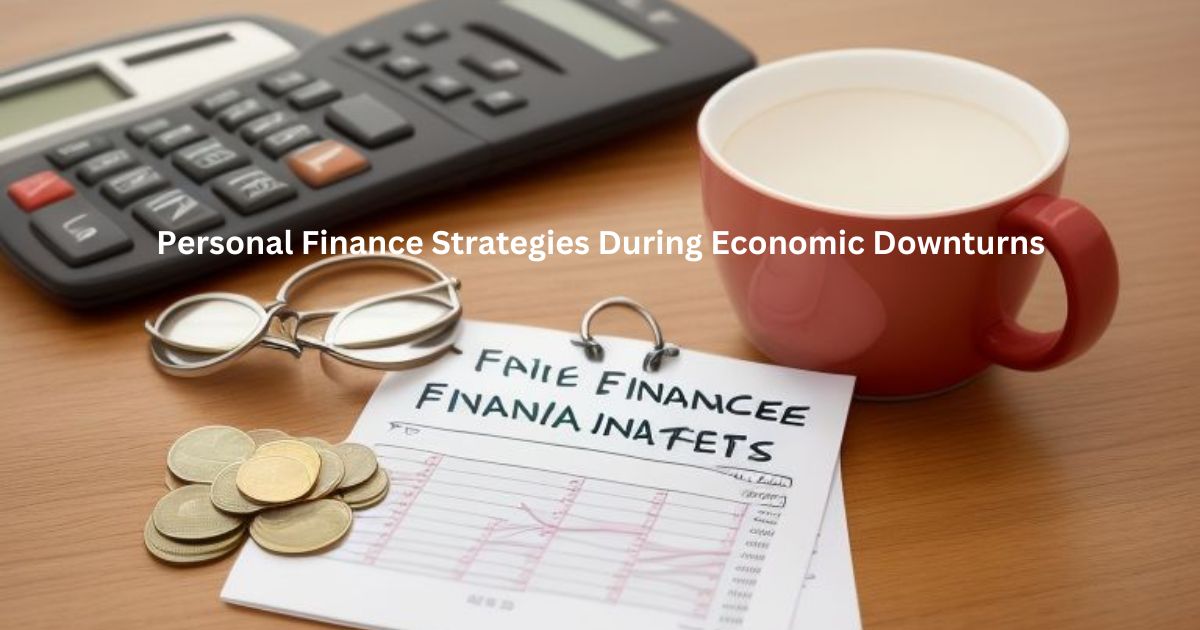As women, we handle many tasks at once. We manage homes and careers. It’s crucial to focus on our finances too. This guide will help you take control of your money and secure your future.
We’ll cover how to understand your finances, build a solid base, and invest wisely. We’ll also talk about managing debt and planning for retirement. We’ll face the financial challenges women often meet and find ways to beat them.
Financial power isn’t just about money. It’s about feeling confident in your money choices. By the end of this guide, you’ll have the skills and confidence to manage your finances well. You’ll reach the financial freedom you’ve always wanted.

Key Takeaways
- Understand the importance of financial independence for women
- Gain insights into your current financial standing
- Develop strategies to build a strong financial foundation
- Explore smart debt management and investment approaches
- Plan for a secure and prosperous retirement
- Overcome financial gender barriers and achieve financial empowerment
- Prioritize your financial well-being and take control of your future
Understanding Your Current Financial Position
As a woman in personal finance, knowing your current financial situation is key. This knowledge helps you make smart choices and control your financial future. Let’s look at how to check your income and expenses, make a personal financial statement, and set financial goals and priorities.
Assessing Your Income and Expenses
Start by examining your income and expenses closely. List all your income sources, like your job, side hustles, or investments. Then, sort your expenses into needs like housing, utilities, and food, and wants like entertainment and shopping. This will show you where you can save or spend better.
Creating a Personal Financial Statement
After listing your income and expenses, make a personal financial statement. This document shows your financial health, including what you own (assets) and what you owe (liabilities). It helps you understand your net worth and track your financial progress.
Identifying Financial Goals and Priorities
Now, set financial goals and priorities. Think about short-term and long-term goals, like saving for emergencies, paying off debt, or planning for retirement. Prioritize these based on their importance and when you need to achieve them. This roadmap will guide your financial journey and align your actions with your goals.
Understanding your financial situation is the first step to managing your finances as a woman. With knowledge of your income, expenses, assets, and goals, you can make informed decisions. This will help you build a secure and prosperous financial future.
How Women Can Take Charge of Their Finances
Women often face unique money challenges, like the gender pay gap and managing a household. But, we can take control of our finances and look forward to a better future. Here, we’ll share money management tips for women and ways to reach financial independence for women.
First, understand your current financial situation. Make a personal financial statement that lists your income, expenses, assets, and debts. This helps you see where you can spend less and start building wealth.
Budgeting is key for women to manage their finances. Create a monthly budget that matches your financial goals, like saving for a home or retirement. Use digital tools and apps to make budgeting easier.
- Implement a comprehensive budgeting system to track your spending and identify areas for improvement.
- Automate your savings to ensure you’re consistently setting aside funds for your financial objectives.
- Explore investment options that align with your risk tolerance and long-term goals, such as stocks, bonds, or real estate.
Good money management for women also means managing debt well. Pay off high-interest debt like credit cards first. Look for ways to consolidate or refinance loans for better terms. This frees up money for your financial goals.
| Financial Goal | Action Steps | Estimated Timeline |
|---|---|---|
| Eliminate Credit Card Debt | Implement a debt repayment plan, negotiate interest rates, and utilize balance transfers. | 6-12 months |
| Build an Emergency Fund | Automate savings contributions and gradually increase the fund to cover 3-6 months of expenses. | 12-24 months |
| Invest for Retirement | Contribute to a retirement account (401(k), IRA) and diversify your portfolio. | Ongoing |
By managing your finances well, you’re not just securing your future. You’re also setting the stage for financial independence for women. Remember, becoming financially empowered is a journey. With the right mindset and strategies, you can achieve financial stability and freedom.
Building a Strong Financial Foundation Through Budgeting
As a woman, taking control of your finances is key for long-term stability and security. Mastering budgeting is a crucial step. It helps you build a solid financial base for now and the future.
Creating a Realistic Monthly Budget
The first step is to make a realistic monthly budget. Track your income and expenses carefully. Then, allocate your funds to meet your financial goals.
By knowing where your money goes, you can make smarter spending and saving choices.
Using Digital Tools for Budget Tracking
Today, many digital tools and apps can help with budgeting. They make tracking your finances easier. These tools help you organize your spending, set limits, and understand your habits.
Emergency Fund Essentials
- Having an emergency fund is vital for a strong financial base. It acts as a safety net for unexpected costs like medical bills or job loss.
- Experts suggest saving three to six months’ worth of expenses in your emergency fund. Saving a bit each month can help you build a strong financial cushion.
By learning to budget, using digital tools, and saving for emergencies, you’re on the path to a strong financial future. Remember, your financial health is a journey. Taking proactive steps today will prepare you for life’s ups and downs.
Smart Debt Management Strategies for Women
Women often face unique financial challenges. The gender pay gap and caregiving demands make it tough. But, smart debt management strategies can help us take control and achieve financial stability.
Prioritizing high-interest debts is key. By focusing on credit cards, personal loans, or other debts with high interest rates first, we can save a lot on interest and pay off our debt faster. Also, trying to get lower interest rates or combining debts into one can make a big difference.
Creating a realistic budget and sticking to it is also important. By tracking our income and expenses, we can find ways to save and use that money to pay off debt. Digital tools and apps can help make budgeting easier.
| Debt Management Strategies | Benefits |
|---|---|
| Prioritize high-interest debts | Saves on interest charges, accelerates debt-free journey |
| Negotiate lower interest rates | Reduces the overall cost of debt |
| Create a realistic budget | Identifies areas for savings, guides debt repayment |
| Utilize debt consolidation | Simplifies payments, potentially lowers interest rates |
By using these debt management for women strategies, we can manage our personal finance for women better. Remember, getting financially free is hard, but with hard work and a good plan, we can do it.
Investment Basics: Growing Your Wealth
As women, we often face unique financial challenges. Investing can be a powerful tool to achieve our long-term financial goals. Whether you’re aiming for financial independence or just want to grow your savings, understanding investing basics is crucial. We’ll explore different investment options, the importance of diversification, and strategies for managing investment risk.
Understanding Different Investment Options
The world of investing is vast and complex. It’s important to familiarize yourself with the various options available. Stocks, bonds, mutual funds, ETFs, and real estate are common investment vehicles. Each option has its own risk-reward profile, so it’s essential to research and understand the pros and cons before making any decisions.
Creating a Diversified Portfolio
Diversification is a fundamental principle of successful investing. By spreading your investments across different asset classes, industries, and geographic regions, you can mitigate the impact of market volatility and reduce your overall risk. Building a diversified portfolio can help you weather market storms and work towards your long-term financial objectives.
Risk Management in Investing
Investing inherently involves risk, but there are strategies you can employ to manage that risk. Dollar-cost averaging, where you invest a fixed amount at regular intervals, can help smooth out the ups and downs of the market. Additionally, regularly reviewing and rebalancing your portfolio can ensure that your asset allocation remains aligned with your risk tolerance and financial goals.
Investing can be a powerful tool for investing for women and financial independence for women. By understanding the basics, diversifying your portfolio, and managing risk, you can take charge of your financial future and work towards the life you envision.
“Successful investing is about managing risk, not avoiding it.” – Benjamin Graham
Planning for Retirement as a Woman
Planning for retirement as a woman is special. Women face unique financial hurdles like the gender pay gap and longer life spans. But, retirement planning for women can lead to financial freedom and security in later years.
Start by figuring out your retirement costs. Think about healthcare, housing, travel, and hobbies. Knowing these costs helps you figure out how much you need to save.
- Look at your current income, spending, and savings to understand your finances.
- Check out retirement accounts like 401(k)s and IRAs to boost your savings.
- Make a plan to save regularly, even a little, to grow your money over time.
Building a diverse investment portfolio is key for retirement planning for women. It helps manage risks and grow your wealth. A financial advisor can guide you in creating a plan that fits your goals.
“Retirement is not the end of the road. It’s the beginning of the open highway.” – Unknown
Don’t forget to focus on financial literacy for women. Learn about money, investments, and taxes. This knowledge lets you make smart choices and control your financial future.

Retirement planning for women might need more effort, but the benefits are huge. By acting now, you can look forward to a fulfilling and stress-free retirement.
Protecting Your Financial Future with Insurance
Women working towards financial freedom must protect their future. This means getting the right insurance. It helps keep our assets, health, and loved ones safe.
Types of Insurance Coverage to Consider
For women, picking the right insurance is key. Here are some important ones:
- Life insurance to support your family if you’re not there
- Health insurance to cover medical costs and get good care
- Disability insurance to keep your income safe if you can’t work
- Homeowner’s or renter’s insurance to protect your stuff
- Auto insurance to lessen the financial hit from accidents
Understanding Policy Terms and Benefits
Insurance policies can be hard to understand. But knowing the basics is essential. Learn about deductibles, premiums, coverage limits, and what’s not covered. This helps you make choices that fit your financial plans.
Creating a Comprehensive Protection Plan
Building a solid insurance plan takes thought. Think about your finances, how much risk you can take, and your goals. Talk to insurance experts to find a plan that fits your needs and budget.
Getting the right insurance is a big step towards financial freedom. By knowing your options, understanding policy details, and making a plan, you can secure your financial future. This builds a strong base for the years ahead.
Breaking Through Financial Gender Barriers
Women have made great strides towards financial freedom and equality. But, we still face many challenges. With the right approach, we can overcome these obstacles and secure our financial futures.
The wage gap is a major hurdle for women. Despite progress, women often earn less than men for the same work. To fight this, we must push for fair pay, negotiate our salaries, and find jobs that value our skills.
- Negotiate your salary and benefits to ensure you’re being paid fairly
- Research industry standards and be prepared to justify your value
- Seek out organizations and companies that prioritize gender pay equity
Another challenge is the gender investing gap. Women often feel less confident or less financially savvy. To tackle this, we must educate ourselves and take charge of our investments.
- Educate yourself on investment options and strategies
- Start small and gradually build a diversified portfolio
- Seek out resources and mentors to guide you along the way
By tackling these barriers, we can create a future where women are financially equal. It’s time to break down these barriers and take control of our financial futures.

“The path to financial independence is not always easy, but it’s a journey worth taking. With determination and the right strategies, we can overcome the barriers and achieve the financial freedom we deserve.”
Conclusion
As you’ve learned, taking control of your finances is empowering and key for long-term financial freedom. You’ve started by understanding your current financial situation. Then, you created a budget and managed your debt well. Learn how to manage money effectively with YNAB’s budgeting philosophy.
Investing in your future and planning for retirement are also important. They help you build wealth and secure your financial future. Plus, having the right insurance coverage protects you from unexpected events.
The path to financial independence is ongoing, but you’re now ready to face challenges. Use the tools and strategies from this guide to overcome them. Take action and watch your financial control grow. Let’s break down gender barriers and inspire women to take charge of their finances and achieve financial independence.
Discover: 5 Best Financial Planning Apps for Beginners
FAQ
What are some key steps I can take to take charge of my finances as a woman?
First, assess your current financial situation. Then, create a budget and stick to it. It’s also crucial to have an emergency fund.
Don’t forget to prioritize debt repayment and explore investment options. Lastly, plan for retirement. The most important thing is to actively manage your money.
How can I create a personal financial statement to better understand my financial position?
To create a personal financial statement, list all your assets and liabilities. Assets include savings, investments, and property. Liabilities include loans, credit card balances, and mortgages.
This will give you a clear picture of your net worth. It helps you identify areas to focus on.
What are some budgeting tips that can help me take control of my spending?
Start by tracking your expenses. Set financial goals and automate savings. Use digital tools to monitor your spending.
Be realistic with your budget. Leave room for occasional splurges.
How can I get started with investing as a woman who’s new to it?
Start small and educate yourself. Learn about stocks, bonds, mutual funds, and ETFs. Consider speaking with a financial advisor.
They can help you create a diversified portfolio. This should align with your risk tolerance and goals.
What are some strategies for paying down debt as a woman?
Create a debt repayment plan. Focus on high-interest debt first. Negotiate with lenders and avoid new debt.
Be patient and disciplined in your approach. It’s a long-term process.
How can I ensure I’m adequately prepared for retirement as a woman?
Estimate your expected expenses for retirement. Contribute as much as you can to retirement accounts like 401(k)s and IRAs.
Consider longevity and healthcare costs that may impact women’s retirement planning. Seeking guidance from a financial advisor can be very helpful.
What types of insurance should I consider to protect my financial future?
Consider health, life, disability, and homeowner’s or renter’s insurance. It’s important to understand each policy’s terms and benefits.
Ensure you have adequate protection. This will safeguard your financial future.




